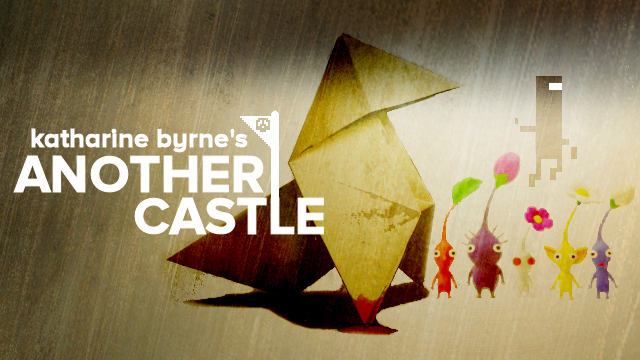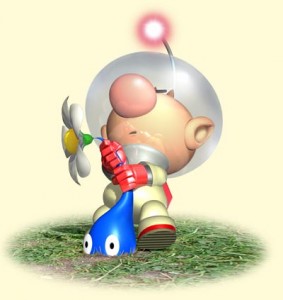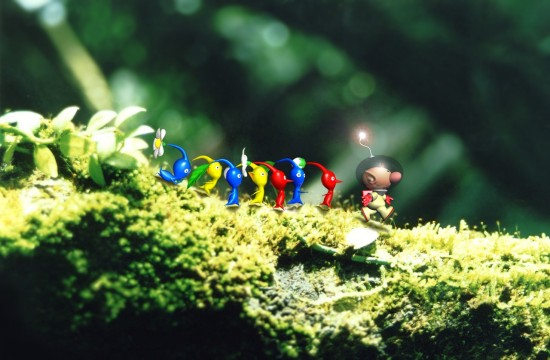
Death is everywhere in video games– there’s no escaping it. It marks our failures, it marks our victories (hey, someone’s got to peg it when you’re defeating the world’s greatest evil), it makes us laugh, and it makes us cry. Whether it’s the innocent demise of a tiny goomba, a cheeky Game Over screen, or the world’s most chilling moon apocalypse, death is about as integral to video games as stealing princesses is to Bowser’s day planner.
At the same time, though, death and games have never had the easiest of relationships. If the wider media’s not raging about how games are killing both ourselves and those around us, it’s the industry itself questioning how we got ourselves into having almost nothing but violent explosions and gory head-shots at this year’s E3. But this isn’t anything particularly new. Even back in the early days of the arcades, games seemed to positively revel in the “d” word– just take a look at the tantalising continue screens of Ninja Gaiden and Mortal Kombat 4. A little childish, perhaps, but don’t try and pretend you didn’t take a tiny peep right at the end to see what happened!
Of course, there’s nothing wrong with using comedy to talk about death. If we weren’t able to see the funny side of the afterlife, we wouldn’t have games like Ghosts ‘n’ Goblins or Grim Fandango (or, indeed, one of my all-time favourite Game Over screens). But I want to discuss three games that take a slightly more sombre approach to death today, exploring what it is to be faced with your own mortality and the lengths we’re prepared to go to in order to survive. Those games are Pikmin, Heavy Rain and BIT.TRIP Fate. They’re probably not the first three games you’d think of when talking about death in games (well, except maybe Heavy Rain), but I think all three of them manage to use death in a much more thought-provoking and disquieting way than most other games have managed in the past, especially when we look at them all together.
 So let’s start with Pikmin, the most unlikely of our three death titles. When you think of Pikmin, you think about cute little carrot dudes and the weird and wonderful lifeforms living in the game’s giant, overgrown landscapes. Death is probably the last thing on your mind when venturing out into the wild unknown, but the grim reaper’s all around in Pikmin (and I’m not just talking about the perpetual swooping snitchbug shadow hanging over your every step either). Just after Olimar’s ship crash-lands into this strange, new planet, he tells us that the life-support system in his suit will only function for 30 days due to the high levels of poisonous oxygen in the air: “If I can’t repair the Dolphin by then… No! Better not to think about it. I must find the missing ship parts!” he says.
So let’s start with Pikmin, the most unlikely of our three death titles. When you think of Pikmin, you think about cute little carrot dudes and the weird and wonderful lifeforms living in the game’s giant, overgrown landscapes. Death is probably the last thing on your mind when venturing out into the wild unknown, but the grim reaper’s all around in Pikmin (and I’m not just talking about the perpetual swooping snitchbug shadow hanging over your every step either). Just after Olimar’s ship crash-lands into this strange, new planet, he tells us that the life-support system in his suit will only function for 30 days due to the high levels of poisonous oxygen in the air: “If I can’t repair the Dolphin by then… No! Better not to think about it. I must find the missing ship parts!” he says.
To be fair, I don’t think it’s something I’d like to think about either, but the threat of death is there even before we begin. Now you may think this isn’t really any different from most other video games. We have the same amount of control over Olimar’s life as we do over someone like Mario’s or Link’s, and he’ll kick the bucket just as easily if we make too many mistakes. The key difference, however, is the time limit. If we don’t find all those missing ship parts in 30 days, Olimar will die, and I think this added sense of pressure together with the way Olimar articulates his thoughts about death in his Captain’s Log really forces the player to confront Olimar’s mortality head-on.
In my log, for instance, his entry for Day 11 reads, “Hope has begun to well up within me for the Dolphin’s repair and my own changes for a reunion with my dear family”. At this point, progress has been going quite well. I’m a little ahead of schedule, and the dreaded day of judgment is far enough away to still feel optimistic about survival. When my efficiency starts to wane eight days later, however, despair soon starts to take hold: “I wonder if I shall ever be able to escape from this world. How much suffering must I endure before I can finally see my family back home again? Still… When my heart grows too heavy, I take comfort in my efforts. I will get home… or I will expire trying.”
The ups and downs of Olimar’s mental state not only adds a certain poignancy to our endeavours, but I think it also makes his enduring struggle against the odds incredibly compelling. I would always feel terrible when I failed to bring anything back to the Dolphin at the end of the day, and I’m almost a little ashamed to admit that I did, in fact, end up restarting a few days because of it. But when everything seemed to be telling me that death was almost an absolute certainty in this game, there was nothing I wanted more than to try and defy that fate and bring Olimar safely back to his family– and when I did manage to resist the urge to restart, the urgency of the task at hand would always make me think harder about my intended strategy. It forced me to be more economical with my time, more trusting of my little cohort, and more daring with my own life too, and I’d frequently use myself as bait to distract hungry Bulborbs or over-enthusiastic Blowhogs so my Pikmin could get through unscathed. All this I did for the sake of my own survival, and there was almost nothing I wouldn’t do to help save myself.

I may have cheated slightly by not saving over my failures, but my heart was in the right place, honest!
But when I was faced with pulling the trigger on a drug dealer in Heavy Rain to help save Ethan’s son, Shaun, that kind of altruism flew out the window. I’d just run round this guy’s apartment in a frenzy of dodged shotgun bullets and missed punches, and I’d finally got him on his knees to seal the deal and complete the trial set by the Origami Killer, but I just couldn’t do it. All it would have taken was one press of the trigger button, but I refused to make myself a murderer. I wouldn’t stoop to the same level as the Origami Killer, so I put the gun away, failed the trial and didn’t get the next piece of the address telling me where my son was being held captive.
It was quite a powerful and excruciating moment, as up until that point I’d been ready to do almost anything to see my son again. I’d driven Ethan down the wrong side of a freeway, I’d made him endure intense physical pain and electrocuted him, and I’d even cut off his finger. Each one had made my heart race as I squirmed and grimaced in my seat, but as I held the gun to the guy’s face, I realised why I was so hesitant to shoot him. Much like my experience in Pikmin, I was completely fine with risking my own life to achieve my goal, but when it came to using someone else’s, even when it was a drug dealer’s life against my own son’s survival, I just wasn’t up to the challenge.
Pages: 1 2




 ShareThis
ShareThis






